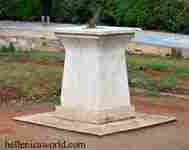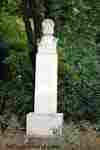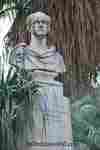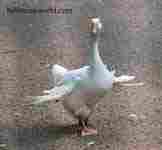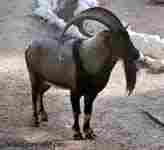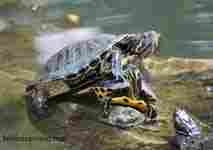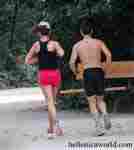.
The National Garden[1][2] (formerly the Royal Garden) (Greek: Εθνικός Κήπος) is a public park of 15.5 hectares (38 acres) in the center of the Greek capital, Athens. It is located directly behind the Greek Parliament building (The Old Palace) and continues to the South to the area where the Zappeion is located, across from the Panathenaiko or Kalimarmaro Olympic Stadium of the 1896 Olympic Games. The Garden also encloses some ancient ruins, tambourines and Corinthian capitals of columns, mosaics, and other features. On the Southeast side are the busts of Ioannis Kapodistrias, the first governor of Greece, and of the Philhellene Jean-Gabriel Eynard. On the South side are the busts of the celebrated Greek poets Dionysios Solomos, author of the Greek National Hymn, and Aristotelis Valaoritis.
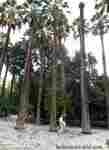
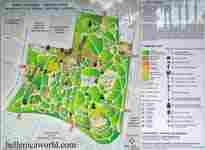
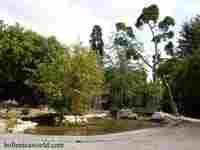
Washingtonia filifera trees, National Garden of Athens, National Garden of Athens,
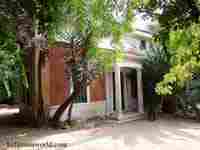
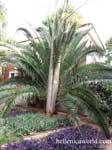
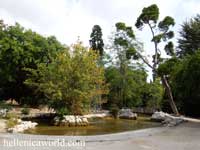
National Garden of Athens, Ceiba casearia , Small lake with Bridge,
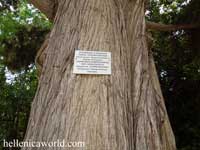
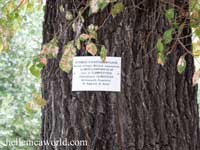
Cupressus semprevirens var. horizontalis, Ulmus Carpinifolia (Syn. U. Campestris),
History
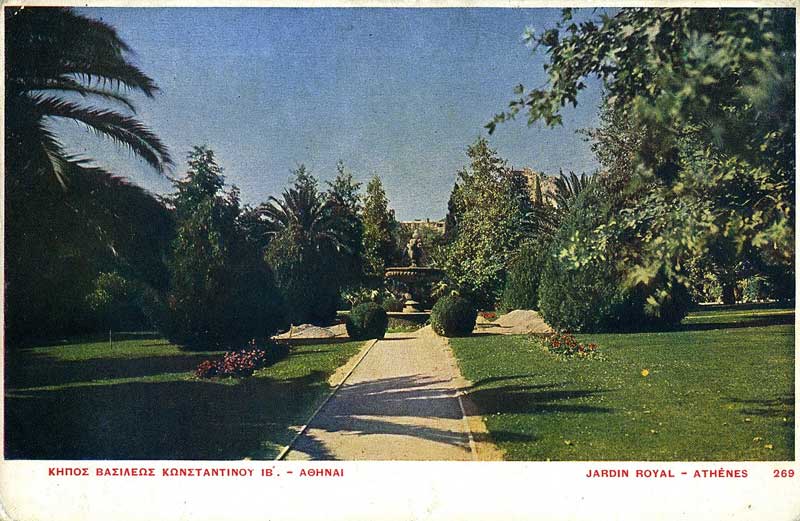
Royal Garden - Athens. Postcard c. 1915.
Antiquities within the National Garden
The Royal Garden was commissioned by Queen Amalia in 1838 and completed by 1840. It was designed by the German agronomist Frederick Schmidt who imported over 500 species of plants and a variety of animals including peacocks, ducks, and turtles. Unfortunately for many of the plants, the dry Mediterranean climate proved too harsh and they did not survive; animals continue to thrive. The upper garden, behind the Old Palace, was fenced off and was the private refuge of the King and Queen.
In 1878, the Danish architect Theophil Freiherr von Hansen designed the neo-classical Zappeion Hall. It was named after Evangelos Zappas, an Epirote businessman who was instrumental in starting the Zappian Olympic Games, a precursor to the modern Olympic Games. The Zappeion was the Olympic village for the 1896 Summer Olympics in Athens and also as a venue for the fencing events. Starting in the 1920s, the area in front of the Zappeion was a major transportation hub for trams and buses. Today it is used for public exhibitions. Henry Miller wrote in 1939:
"It remains in my memory like no other park I have known. It is the quintessence of a park, the thing one feels sometimes in looking at a canvas or dreaming of a place one would like to be in and never finds."[3]
A Monkey Bite
The Royal Garden was the scene of an unusual turning point in Greek history. In 1920, at the end of World War I, Greece under King Alexander and the government of Eleftherios Venizelos remained committed to the Megali Idea (Greek for The Great Idea) that Greece should regain control from the Ottoman Empire of portions of Asia Minor on the Ionian coast. In 1919, they began the Greco-Turkish War with the support of their former allies Britain and France. While walking in the Garden on September 30, 1920, King Alexander was bitten by a pet monkey (whose pet it is not revealed) and he died of sepsis three weeks later. His death ushered the return of his deposed father, King Constantine I who had been deposed for his pro-German sympathies during the First World War. Upon his return to power, King Constantine assisted in the defeat of his political nemesis, Venizelos in the November 1920 General Election. The new Prime Minister, Dimitrios Gounaris, a monarchist, began replacing the Venezelist military staff with officers more loyal to the new King. As a result of this change in political environment and it is argued, the reduction in military experience by the Army's General Staff, the Allied Powers withdrew their support. The result was the 1922 Great Fire of Smyrna, the defeat of Greek troops in Turkey with exodus of Greek refugees and the 1923 Exchange of populations between Greece and Turkey known collectively by the Greeks as the Asia Minor "Catastrophe."
Today
Ponds in Athens National Garden
Today the National Garden, as it was renamed after the 1974 plebiscite to abolish the monarchy, is open to the public from sunrise to sunset. The main entrance is on Leoforos Amalias, the street named after the Queen who envisioned this park. You can also enter the garden from one of three other gates: the central one, on Vasilissis Sophias Avenue, another on Herodou Attikou Street and the third gate connects the National Garden with the Zappeion park area. In the National Garden there are a duck pond, a small zoo, a Botanical Museum, a small cafe and a Children's Library and playground.
See also
Greek gardens
Landscape design history
External links
Athens City Guide.
References
^ "The National Garden". Athens Info Guide , 2004-2009. Retrieved 2010-03-09.
^ "The National Garden, Zappion, Panathenaic Stadium and the Temple of Olympian Zeus". Athens Survival Guide. Retrieved 2010-03-09.
^ "National Gardens". Travel to Athens, Greece. Retrieved 2010-03-09.
| Ancient Greece
Science, Technology , Medicine , Warfare, , Biographies , Life , Cities/Places/Maps , Arts , Literature , Philosophy ,Olympics, Mythology , History , Images Medieval Greece / Byzantine Empire Science, Technology, Arts, , Warfare , Literature, Biographies, Icons, History Modern Greece Cities, Islands, Regions, Fauna/Flora ,Biographies , History , Warfare, Science/Technology, Literature, Music , Arts , Film/Actors , Sport , Fashion --- |
Retrieved from "http://en.wikipedia.org/"
All text is available under the terms of the GNU Free Documentation License

